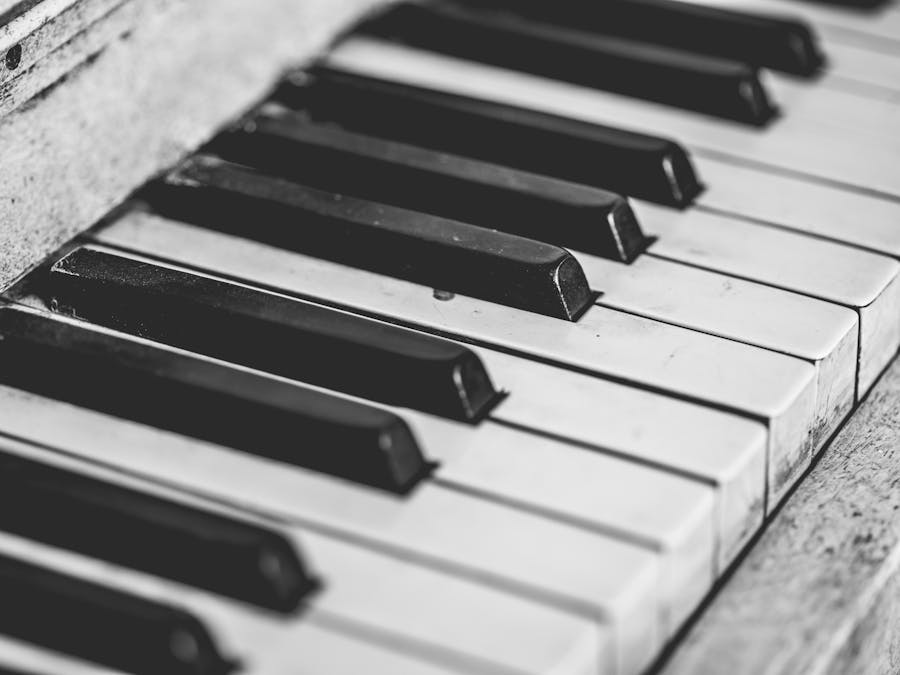 Piano Guidance
Piano Guidance
 Piano Guidance
Piano Guidance

 Photo: Ono Kosuki
Photo: Ono Kosuki
Notes can sit on a line or in a space. The height of the note determines the pitch. A higher line means a higher pitch, so moving up the stave represents moving right along the keyboard. We add ledger lines above or below the staff if a note is higher or lower than the 5 staff lines.

Harmonic Structure In a short, 8-bar tune, the end of the first phrase sounds best if it ends on an imperfect cadence. This means that the end of...
Read More »
Often, having a 'standby' sound keep your brain company as you fall asleep is better than silence because silence is more easily and effectively...
Read More »We challenge you to find a pianist who learned to read music and regretted it. But there are plenty who wish they had learned earlier. Like any language, you can get by without taking the time to read or write, especially in the beginning. In the long term, however, being able to read music holds a range of benefits, and you limit yourself without them. It’s quicker than you think. This isn’t strictly a “good thing”. But if the only downside to learning is time and effort, it’s worth stressing that it doesn’t take that long. Notation may look like lines and dots on a page right now, but you will be reading and playing your first piece of music in no time. Work systematically, gradually build up knowledge of new notation, and you will be surprised how quickly you understand literally everything. Sight reading. This is the ability to read a piece of music for the first time and play as you go, as easy as reading this sentence out loud. It takes time and practice, but eventually if you have the written music, you can play it. Since written music is widely available online, learning to sight read music gives you the ability to immediately play practically anything. Reading removes doubt. Your “musical ear” develops naturally over time. But learning by ear alone requires training to identify notes, intervals and chords at an advanced level. This is a powerful skill, but even pianists who spent years developing their ear will have difficulty sometimes. It is especially tough to identify one note among many, or a rapid succession. Say you hear a piece of music and you want to learn how to play it. If you can’t read music, you need to slow it down, play over and over, and still be unsure if you have heard it correctly. If you read the music, you will know instantly what the notes are and how they are supposed to be played, ready to get on with it.

The chords you'll need for Fur Elise are A minor, D minor, E minor, and G major. 3. Once you know the chords, it's time to start playing the...
Read More »
This so-called “flatted third” is closer to the root note, and the distance from the major third is thought to create peripheral dissonance and a...
Read More »No boundaries. Just because you know how the composer intended it to be played, it doesn’t limit you to playing it in this way. You need to know the rules before you can break the rules. Duke Ellington created jazz masterpieces based on Grieg’s Peer Gynt and Tchaikovsky’s Dance of the Sugar Plum Fairy. But first he was note-perfect on the originals, which meant studying and building upon the composer’s written music.

Simply Piano has a slightly different pricing structure. You can start with a seven-day free trial to help you see if this is the app for teaching...
Read More »
A vampire spawn can become a normal vampire after drinking the blood of the vampire who originally turned them into a vampire spawn. A vampire...
Read More »
Direct exposure of the case, soundboard, strings, and action assembly to water can commonly cause major glue failure of integral structural...
Read More »
Top music videos Rank Title Platform 1. ""Butter"" YouTube 2. ""Dynamite"" YouTube 3. ""Pink Venom"" YouTube 4. ""How You Like That"" YouTube 7...
Read More »